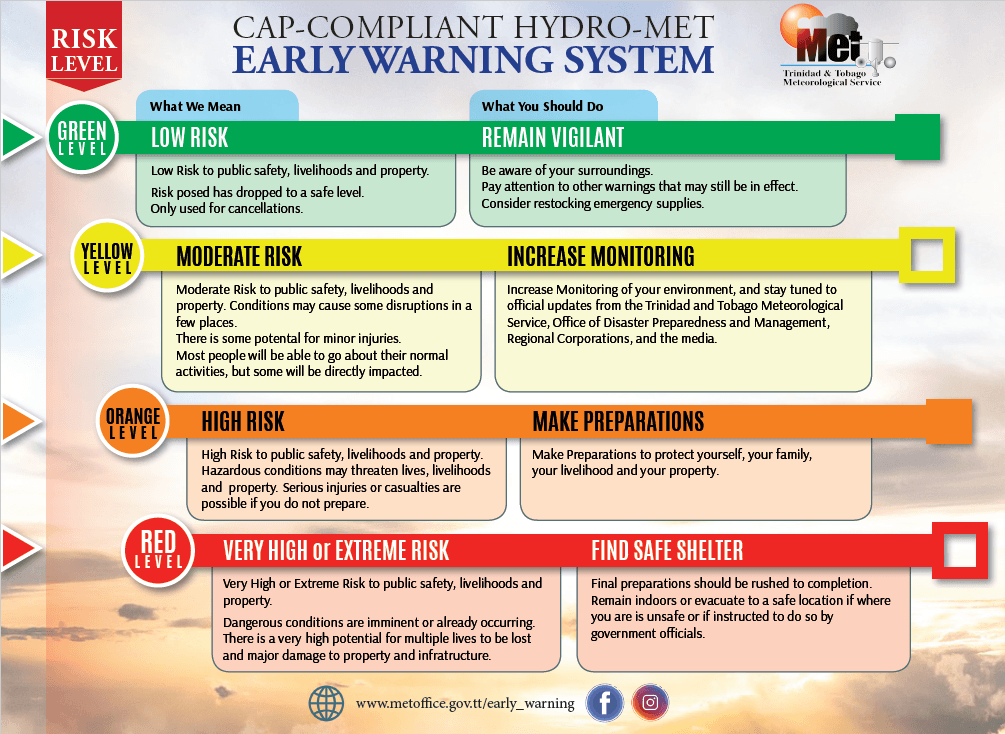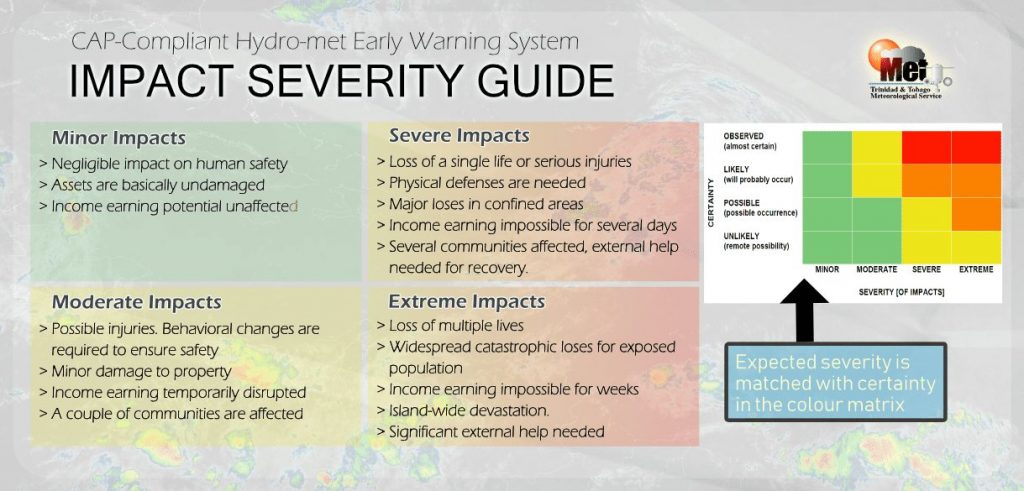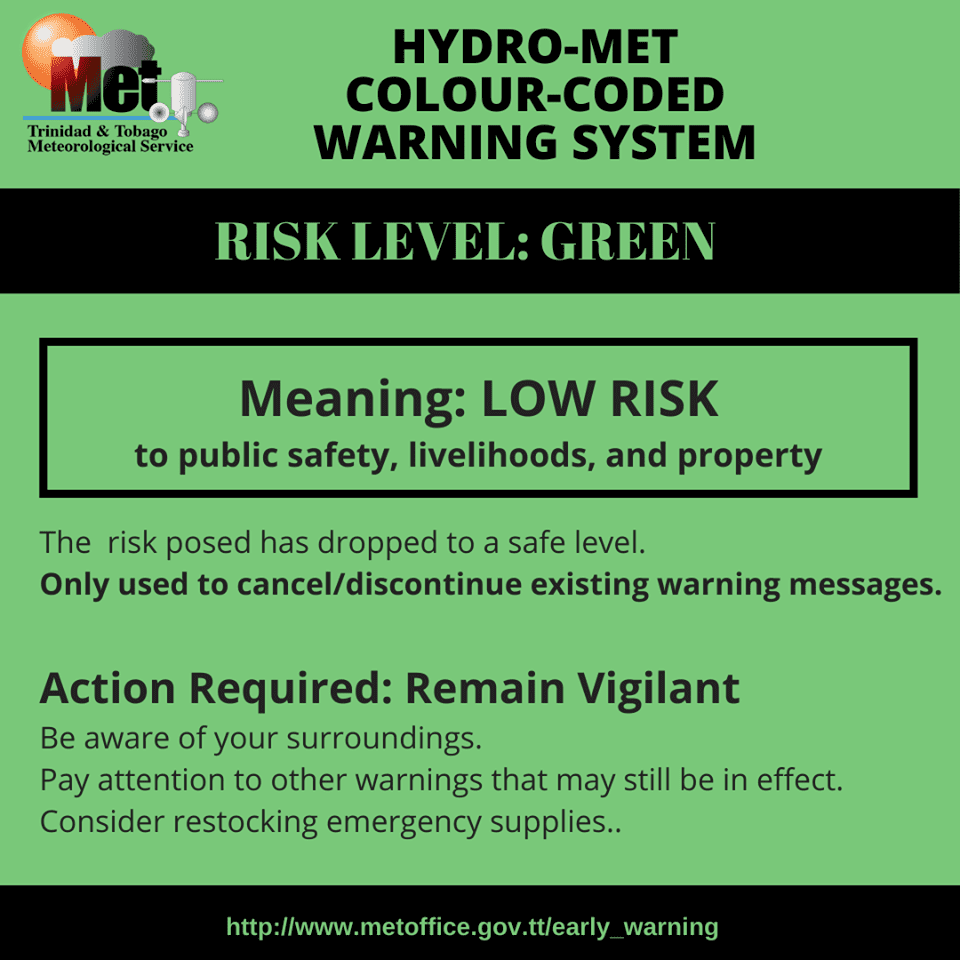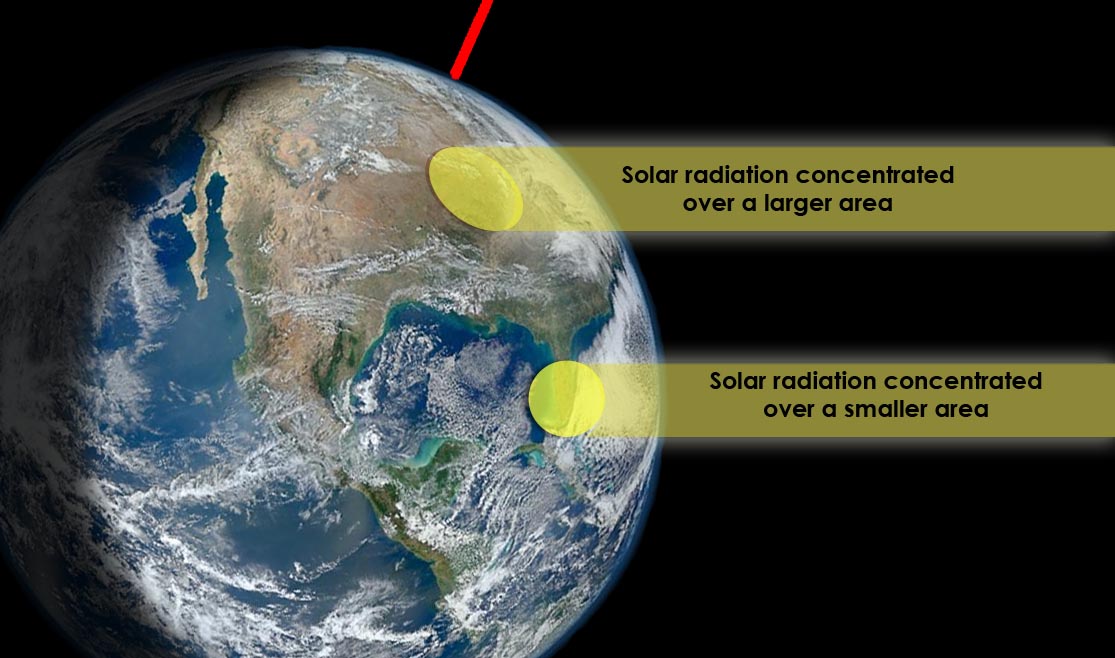While the Hot Spell Watch was discontinued for Trinidad and Tobago, warm temperatures still remain forecast for the country over the next few weeks as the region moves through the second peak of the local heat season.
What you need to know
— What has happened: Over the last five days, Trinidad and Tobago has experienced elevated levels of heat, occasionally surpassing the definition for a hot day at both Piarco (maximum temperatures at or above 34°C) and Crown Point (maximum temperatures at or above 33°C).
— What is expected: Maximum high temperatures are forecast to be near to above average for both Trinidad and Tobago for the remainder of September.
— Hazards: While temperatures are not forecast to reach excessively hot levels, the heat index, or what outside feels like, will still require caution through the end of September, resulting in the risk of heat exhaustion and heat stroke amongst the population, with heat stress possible for crops and animals.
Latest Alerts
TTMS Issues Adverse Weather Alert For T&T
Trinidad and Tobago is NOT under any tropical storm or hurricane threat, watch, or warning at this time.
The Hot Spell Alert
Officially, according to the TTMS, a hot spell is declared when Trinidad and Tobago experiences maximum high temperatures reach or exceed 34°C at Piarco AND maximum high temperatures reach or exceed 33°C at Crown Point, Tobago. Historically, the maximum high-temperature threshold for Tobago was at or above 32°C, but this was changed in August 2023, as the definition of a hot day is meant to capture maximum high temperatures in the top 95th percentile of temperatures and, according to the TTMS climatologist office, 32°C was too low. Hot spells are the same as heat waves.
The Trinidad and Tobago Meteorological Service discontinued the Hot Spell Watch (Yellow Level) on Monday, September 23rd, 2024, at 9:48 AM for both Trinidad and Tobago.

Trinidad and Tobago is not under any tropical storm watch or warning at this time.
In their discontinuation message, they advise, “The Trinidad and Tobago Meteorological Service is discontinuing its Hot Spell Watch. Partly cloudy to cloudy conditions and rainfall events are expected to lower maximum temperatures, and these conditions are forecast for at least the next four days. As a result, the hot spell warning (sic. – it was a Hot Spell Watch) is discontinued. The TTMS advises, however, that Trinidad and Tobago is still in its heat season, and warm to hot temperatures are still expected over the coming weeks.“

The watch’s color indicates the severity of the event and its probability of occurring. Currently, the alert level is Green, as the discontinuation was issued, but the certainty is at its lowest on the risk matrix, at unlikely, and the possible impacts are still moderate.
Generally, at Green Level, according to the TTMS, there is a low risk to public safety, livelihoods, and property. For a moderate alert, even in a discontinuation alert, there is the potential for possible injuries, where behavioral changes are required to ensure safety. Generally, there may be minor damage to property, with income-earning temporarily disrupted and a couple of communities affected more than others.
The Met Office is advising the public to wear appropriate clothing, stay hydrated at all times, and keep out of direct sunlight to avoid sunburn. Open appropriate windows, vents and doors in your homes to ventilate at times.


What caused the excessive heat?
Since mid-August, multiple low-pressure systems and occasional weak tropical cyclones have safely moved north of Trinidad and Tobago. The result of these low-pressure systems traversing north of the region is weaker surface winds, coming from the southeast and south, to near calm and calm at times.
Though the mid to upper-level environment remains fairly dry, the low-level environment has marginal amounts of moisture, which leads to elevated humidity. As a result, high amounts of warm air remain near the surface, while at night, occasional mid/upper-level clouds prevent the escape of heat into the atmosphere.
The result is warm, humid nights and hot, humid days across not only Trinidad and Tobago but the remainder of the Lesser Antilles.

On a larger scale, the solar altitude, or the angle of the sun relative to the Earth’s horizon, was at 90° across T&T (occurred on August 25th). When this occurs, solar radiation is concentrated over a smaller surface area, causing warmer temperatures.
Trinidad and Tobago is also entrenched in its heat season, which runs from March to October, with the first peak in April and May and the second peak in late August through early October. During these months, the islands experience mostly hot sunny periods and warm nights. Winds are generally weak but occasionally moderate strength from the east to southeast with speeds of 10-20 KM/H.










